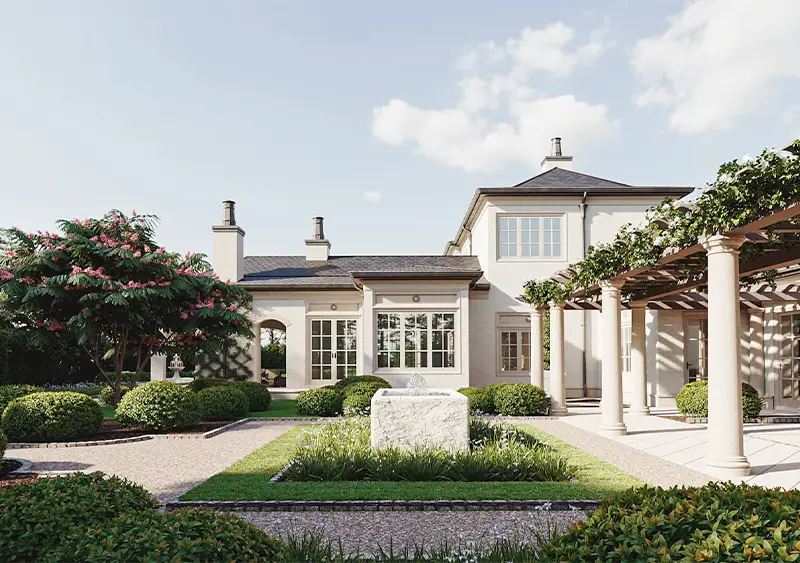How to Make 3D Renders: A Step-by-Step Guide for Beginners and Experts
3D Rendering Made Easy: A Step-by-Step Guide for All Skill Levels

5 MIN READ
February 26, 2025

Written By
Rahimudeen M
Creating 3D renders is no longer a skill reserved for only the most advanced designers. With the right tools, anyone can dive into the world of 3D rendering whether you're an architect, product designer, or hobbyist.
The process involves converting 3D models into high-quality, photorealistic images or animations that can be used for various applications such as marketing, virtual reality, real estate, and much more.
But how do you create these stunning visuals?
In this guide, we will break down the process of making 3D renders from start to finish.
Step-by-Step Process for Creating High-Quality 3D Renders
Learn the complete process of creating stunning 3D renders, from modeling and texturing to lighting and final rendering. Follow these expert techniques to achieve photorealistic results efficiently.
Step 1: Understanding the Basics of 3D Rendering
Before jumping into 3D rendering service it's essential to understand what the process entails. Rendering is the transformation of a 3D model into a 2D image or animation by simulating light, shadows, reflections, and materials. This process is used in architecture, product design, gaming, and visual effects to create photorealistic or stylized visuals.
At the core of every render is a 3D model, which can be built from scratch using 3D modeling software or imported from external sources.
Step 2: Choose Your 3D Modeling Software
The foundation of any 3D render is the model itself. You’ll need reliable 3D modeling software to create the objects and environments that will eventually be rendered. Some popular choices include:
|
Software |
Best For |
Price Range |
|
Blender |
General modeling, animation, sculpting |
Free |
|
Autodesk 3ds Max |
Architecture, product design, animation |
$1,700/year |
|
SketchUp |
Architectural models and interior design |
Free (Basic) / $300/year (Pro) |
|
Maya |
Complex modeling, character design, animation |
$1,700/year |
|
Cinema 4D |
Motion graphics, 3D animations, visualization |
$999/year |
Step 3: Build Your 3D Model
Once you’ve selected your software, the next step is building the 3D model. Here's how to approach it:
- Start with Basic Shapes: Most 3D modeling begins with basic shapes like cubes, spheres, and cylinders. These can be manipulated to form more complex objects.
- Refine the Geometry: Once the base shape is in place, add detail by refining the model’s geometry. This may include adding curves, smoothing edges, and ensuring proportions are accurate.
- Texture the Model: Textures give your model its appearance—whether it’s wood,
metal, fabric, or glass. Applying textures will make your model look more realistic.
- Use texture maps (images that are wrapped around 3D models) or procedural textures (generated by software).
- Apply UV mapping to ensure textures fit correctly on your model.
- Add Materials and Lighting: Materials define the visual properties of the surface—whether it’s shiny, rough, reflective, or transparent. Combine them with lighting to set the scene’s tone.
Step 4: Set Up the Scene for Rendering
To make a 3D render truly shine, it's essential to consider the environment in which your model resides. Here’s what you need to think about:
- Camera Positioning: Just like a photographer, positioning your virtual camera is essential. Decide on the angle, framing, and perspective to capture the best view of the object or scene.
- Lighting Setup: Lighting plays a crucial role in achieving realism in your renders. Proper
lighting can highlight your model's details, cast shadows, and even set the mood. Experiment with different
lighting setups:
- Key light: The primary light source.
- Fill light: A secondary light to reduce shadows.
- Back light: Adds depth and separates objects from the background.
- Background & Environment: Choose a background or environment that enhances your scene. You can create an environment from scratch or use HDR images (high-dynamic-range images) that allow for photorealistic lighting and reflections.
Discover How 3D Rendering Enhances Spatial Awareness through our detailed blog.
Step 5: Choose the Right Rendering Engine
The rendering engine is the software responsible for generating the final image from your 3D model. Some popular engines include:
|
Rendering Engine |
Key Features |
Best For |
|
V-Ray |
High-quality, photorealistic renders, fast rendering |
Architecture, product design |
|
Cycles (Blender) |
Realistic lighting, fast performance |
General-purpose 3D rendering |
|
Arnold |
High-quality rendering with sophisticated lighting |
Visual effects, animation |
|
Lumion |
Quick renders for architecture and landscapes |
Architecture, landscape design |
|
Octane Render |
GPU-accelerated for photorealistic results |
Product and architectural renders |
The choice of rendering engine will affect the quality, time, and realism of your final image. It’s important to choose one that suits your project’s requirements.
Step 6: Render Your Model
Now, it’s time to hit that render button. Rendering is the process where the 3D scene is turned into a 2D image. During this phase, the software will calculate light interactions, textures, and shadows.
You may want to start with a low-resolution render to check for any mistakes in your scene (e.g., lighting, texture alignment, or proportions). Once everything looks good, you can render at a higher resolution for the final image.
Step 7: Post-Production and Editing
After your 3D render is generated, it’s time for post-production. This is where you polish the image, adding final touches like:
- Color correction: Adjust the colors to enhance the image.
- Compositing: Combine multiple renders or add effects like depth of field, motion blur, and lens flares.
- Retouching: Use photo-editing software like Adobe Photoshop to fine-tune details such as shadows, contrast, or remove imperfections.
Step 8: Save and Export Your Render
Once your render is complete and you’re satisfied with the result, save and export the image. Make sure to choose the correct file format (JPEG, PNG, TIFF, etc.) based on your intended use (e.g., for web use or print).
Conclusion
Creating high-quality 3D renders is a blend of technical precision and creative vision. While mastering the process takes time, understanding the key steps—from modeling and texturing to lighting and rendering—ensures you can produce stunning visuals that captivate your audience.
For architects, designers, and visual artists, 3D rendering is more than just a skill—it’s a powerful tool for bringing ideas to life with realism and impact. With the right software, workflow, and practice, you can create professional-grade renders that stand out.
If you're looking for expertly crafted 3D renders without the hassle, Zealous 3D Design Studio is here to help. We specialize in photorealistic 3D rendering service, 3D visualization service, 3D modeling service that elevate your projects and enhance your brand.
Ready to create breathtaking 3D visuals? Contact Zealous 3D Design
Studio today and
let’s turn your vision into reality.
About the writer :
Rahimudeen M is the Senior Operations Manager at Zealous Services, with over 17 years of experience in project ... management and client success. He ensures smooth operations across 3D visualization, animation, and modeling projects. A natural leader, Rahimudeen is passionate about building high-performing teams and delivering top-tier results for clients across global markets.
Read MoreFrequently Asked Questions (FAQ)
What software do I need to create 3D renders?
You can use Blender, 3ds Max, Cinema 4D, Maya, or Unreal Engine for rendering. Blender is great for beginners, while V-Ray and Corona are industry standards. Choose based on your skill level and project needs.
How do I start with 3D rendering as a beginner?
Begin with basic 3D modeling, texturing, and lighting using Blender or SketchUp. Follow tutorials, practice with simple objects, and experiment with different rendering engines. Learning how materials and lighting work is crucial for realistic results.
What are the most important factors for high-quality 3D renders?
Realistic lighting, high-resolution textures, and good camera composition are key. HDRI lighting, proper material settings, and ray tracing improve realism. A well-balanced color scheme enhances the final render.
How long does it take to render a 3D image?
Rendering time depends on scene complexity, resolution, and hardware power. Simple renders take minutes, while high-detail renders can take hours. Use GPU rendering, AI denoising, and cloud rendering to speed up the process.
What is the difference between real-time and offline rendering?
Real-time rendering (Unreal Engine, Unity) is used for games and VR, focusing on speed. Offline rendering (V-Ray, Arnold) is for movies and architecture, offering photorealistic results. Real-time is fast but less detailed, while offline rendering is slow but highly realistic.